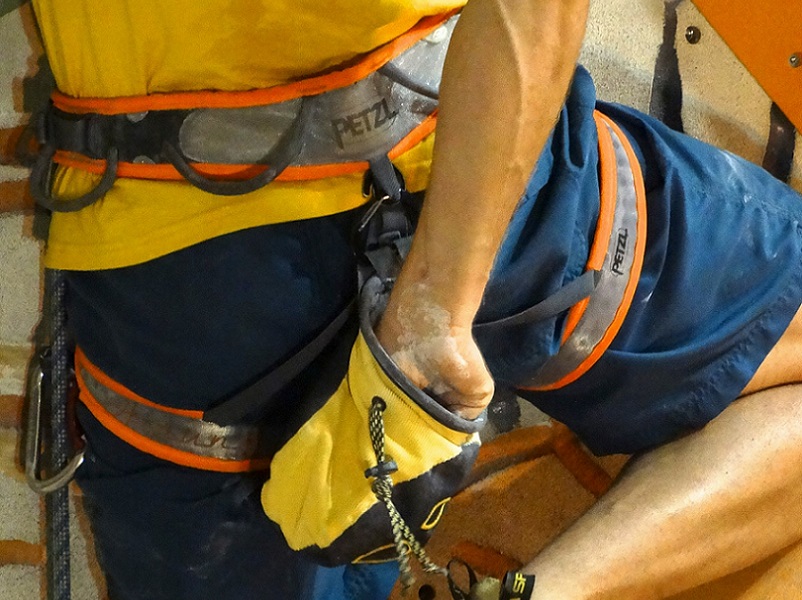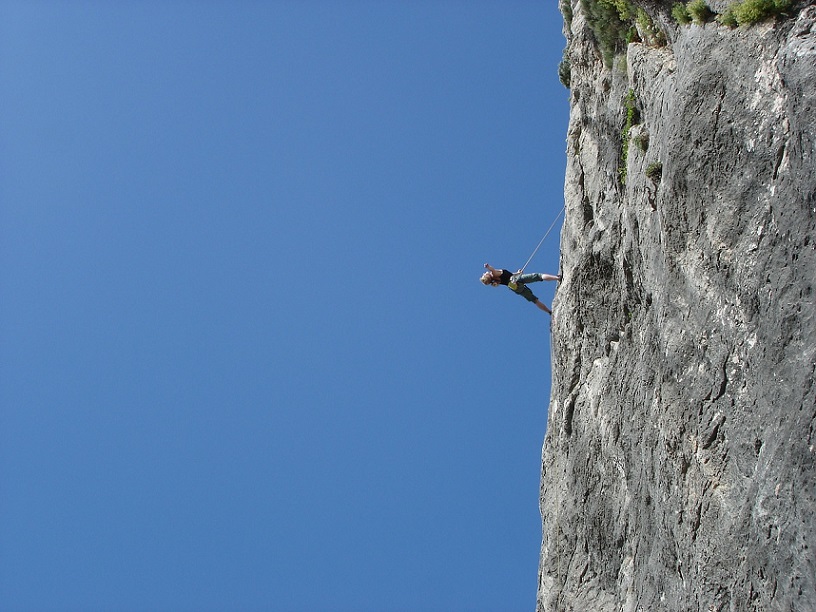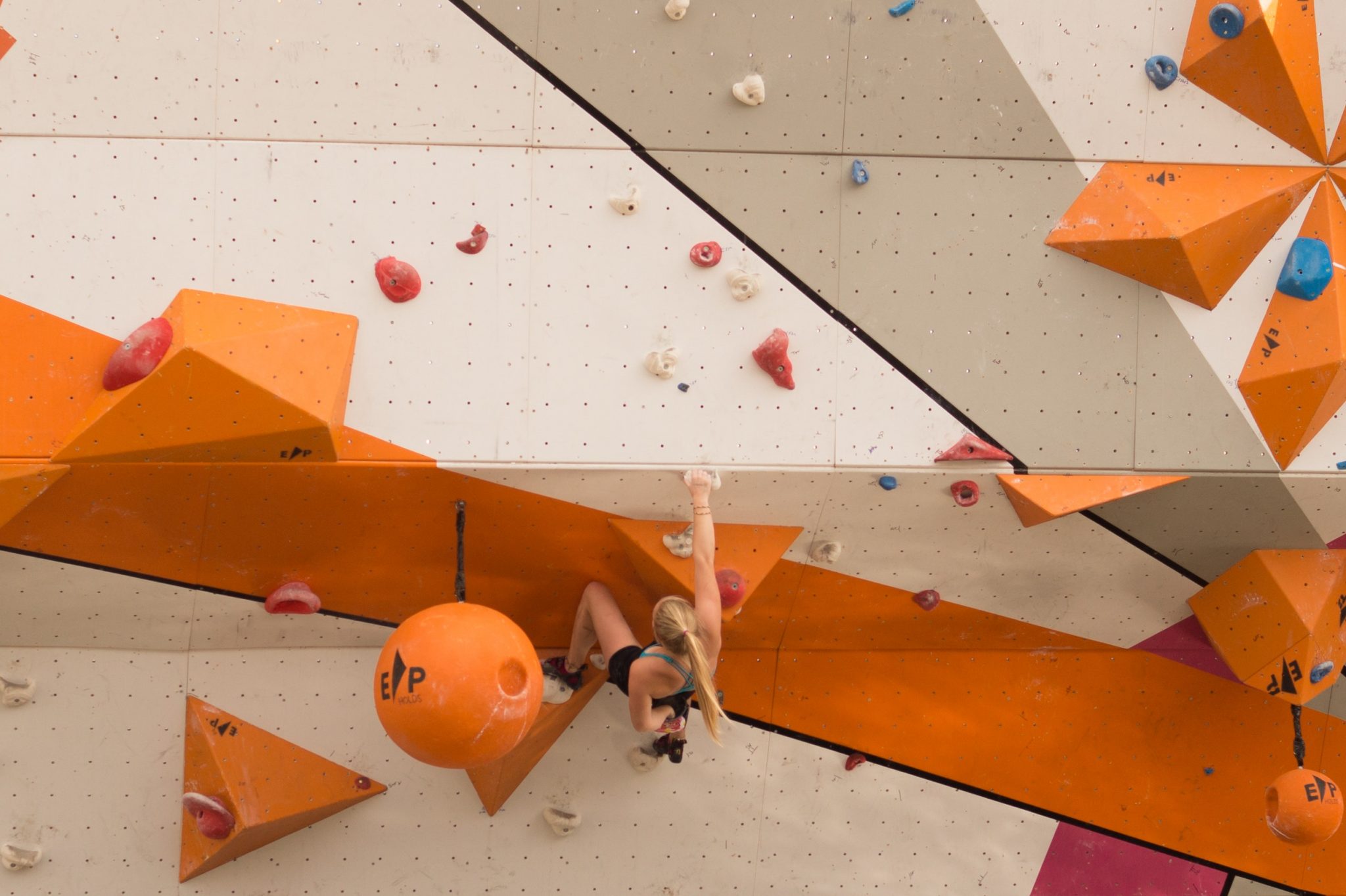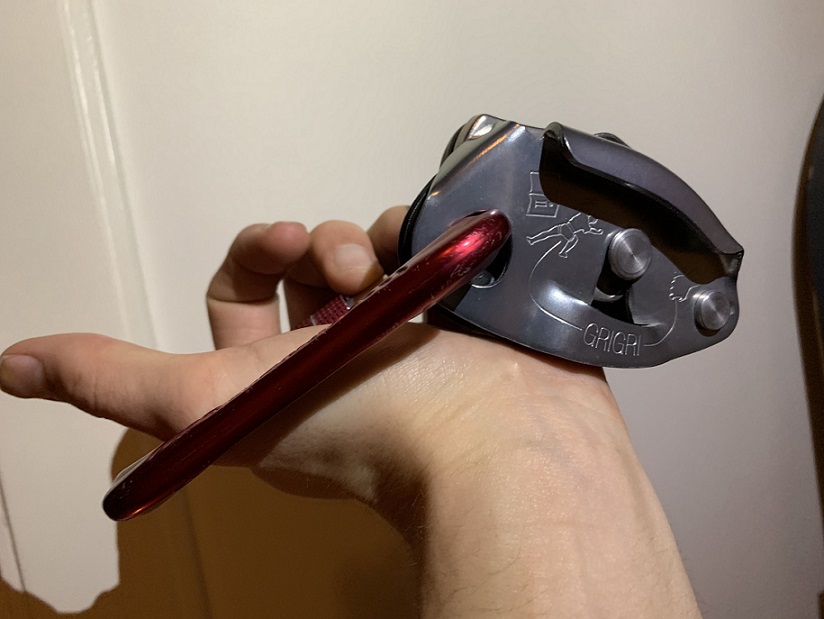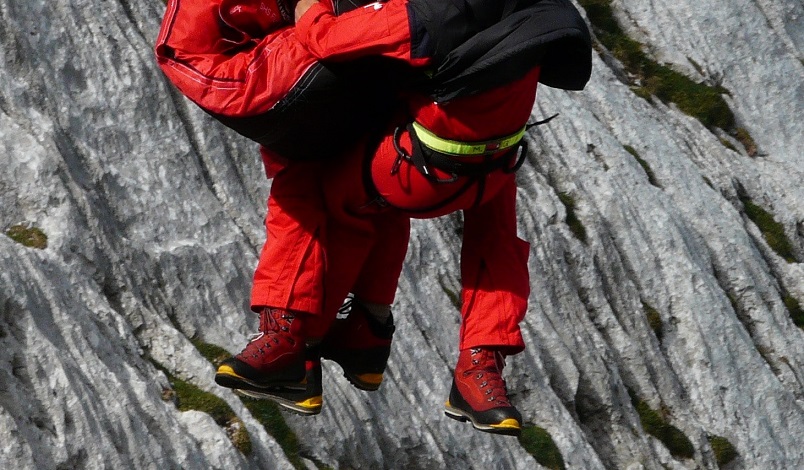Finding the right belaying device can be difficult—not because there are so many bad ones, but because the market is full of great devices. Against this backdrop, you may have trouble finding the belaying device right for you.
In this piece, I’ll be comparing two of the most popular belaying pieces—the Alpine Up and the Grigri—and seeing how they stack up in a head-to-head battle. As you’ll see, each device is good in its own way and provides unique advantages to certain types of climbers. With this guide, you should be able to gain a better idea of what type of belaying devices are out there and how they rate in relation to your climb.
Keep reading to find out how these two devices differ, what they’re good for, and which one is better suited for your next climbing trip!
What Is a Belaying Device?
Let’s start from the beginning. If you’re new to climbing, it’s important that you understand what exactly a belaying device is and how you use it when climbing. In simplest terms, these are assisted braking devices that work automatically to jam climbing rope upon sudden impact. This helps protect the climber in case of an emergency fall and takes (a bit) of pressure off the belayer. These devices are also used in lowering and rappelling, making them a chief part of the climbing experience.
Revolutionized by the introduction of the Grigri nearly thirty years ago, assisted braking belay devices have since become a staple of the climbing experience. As you’ll come to find out, however, not every device operates the same way or with the same type of rope, making some belaying devices better for certain types of climbs than others. With all this in mind, continue onward to find out more about two of the most popular belaying devices on the market today.
The Run-Down
Before we pit these two popular devices against each other, let’s take a moment to examine a brief overview of each. In this section, we’ll go over a bit of history, general usage information, and broad specs so that you can better understand each piece and what it is used for.
Grigri
Whether you’re a beginner or an experienced climber, it’s likely that you’ve heard of the Grigri. This revolutionary belaying device, developed by Petzl in 1991, has gone through several iterations over the years (Grigri 2, Grigri +, and 2019’s GriGri) but has remained remarkably consistent in terms of purpose and performance. The Grigri is by far the most popular belaying device on the market, and it’s not hard to see why. Based on just about every review (and years of personal use myself), it’s clear that the device offers a high performance level that aids in just about any climb.
What can you expect with the updated GriGri model? According to reviews, the device offers smoother lowering, accommodates thinner rope sizes, and easier catch and hold for timelier braking. For this reason, many consider the GriGri to be one of the best single-rope devices for climbers looking for a safe, secure, and comfortable climb.
Alpine Up
Compared to the Grigri, the Alpine Up is a relative newcomer to the belaying field. Despite this, it has made rounds in various circles due to its extreme versatility. The Alpine Up is designed especially for mountaineering, and as such, is accommodates a variety of rope sizes and styles. What’s more, it comes complete with three different belay modes to offer climbers more versatility. Because of its wide variety of features, the Alpine Up is widely considered one of the best modern belaying devices. Coming up, we’ll see just how this device stacks up to the famous Grigri to determine which option is best for your climb.
Performance Ratings
Now for the fun part: in this section, we’ll pick apart the Grigri and the Alpine Up to see how they compare with one another in a variety of categories, including weight and comfort, rope style, belaying modes, and applicability.
Weight and Comfort
Let’s start with the Grigri, particularly its newest iteration. At 6.3 ounces (approximately 179 grams), it’s one of the lightest belaying devices on the market. What’s more, it boasts the advantage of being easy to handle and (relatively) small in size. This means that the GriGri not only competes with but exceeds the standard for size and bulk when it comes to comfortable climbing and belaying. This is a device that you won’t mind carrying in your bag or using every climb.
With that being said, it’s worth noting that, with the GriGri, left-handed individuals are at a disadvantaged. As the belaying mechanisms are located on the right side of the device (with sharp edges on the left), left-handed climbers may experience a longer-than-average adjustment period. While this may temporarily limit the comfort of those using the device, most belayers report little to no complaints after the initial adjustment period is over.
When it comes to weight, the Alpine Up is slightly (but likely negligibly) lighter than the GriGri, clocking in at just 175 grams. With a size that many relate to the GriGri, the Alpine Up doesn’t pose a significant advantage when it comes to weight or comfort. Also like the GriGri, the device can be mastered by both left and right-handed individuals (though adjustment periods may vary). For this reason, it’s safe to say that neither have a significant advantage over the other in this category.
Winner: Tie
Rope Style
Here’s where the discrepancies between the two devices really begin to widen. All Grigri models are designed specifically to accommodate single rope. Due to the nature of the device, half or double ropes cannot be used with the Grigri. This is because the device is geared specifically toward lead and sport climbing. Building on this, the Grigri has only one location through which climbers can install rope, making it a less convenient option for some more versatile climbers.
The Alpine Up, on the other hand, boasts much more inclusive rope accommodation, including use with half, twin, and single ropes. This compatibility has led some reviewers to call it the “most versatile” belaying device ever made. But is there a downside to this? Based on reviews, while the Alpine Up works great with half ropes—and may even be the best in that category—many climbers don’t recommend the device for single rope climbs. For sport climbers, unfortunately, this may severely limit the applicability of this belaying device. In short, while the Alpine Up is great for alpine climbing, it’s not the best for sport climbs (either at the gym or on the rocks).
Winner: GriGri
Belaying Modes
The GriGri can be used in two basic ways. For most belays, the device works by running a rope over a spring-containing cam that does an excellent job of catching the rope at the sign of upward tension. For the belayer, only a small amount of pressure is required to lock the climber safely into place. Climbers can also choose to belay off the anchor for auto-block functionality. In order to do this, simply leave a hand on the brake while feeding slack to make sure the device locks and raise the brake rope when lowering.
Because of its functionality, the GriGri is consistently rated one of the best belaying devices when it comes to catching falls. The Alpine Up, too, boasts amazing functionality. With three specific belaying modes (click-up mode for hand assisted braking, dynamic mode for manual braking, and guide mode for self-locking belaying for one or two climbers), the device is one of the most versatile on the market. Specifically, the device uses V grooves and self-locking abseiling to make sure the climber is safe (even in the vent that the rope is not inserted correctly).
As both succeed at keeping climbers safe within their niche, it’s hard to choose a winner here.
Winner: Tie
Rappelling and Lowering
Rappelling and lowering with the GriGri is fairly simple: to do so, simply peel back a plastic handle to open the cam that’s holding the rope. This will allow the rope to be lowered. A climber needs only to keep his hand on the brake end to control the speed. Some reviewers have noted that thinner ropes (the GriGri can accommodate 8.5mm ropes, making it nearly exclusive in its class) are easier to lower than thicker ropes, meaning beginner climbers could be at a bit of a disadvantage.
The same can be said of the Alpine Up, however. Reports of larger single ropes getting caught or not passing through the device indicate that thinner ropes are optimal for use. With these thinner ropes, however, the Alpine Up is able to effectively rappel and lower in both click-up mode and dynamic mode, making it one of the best options on the market.
Winner: Alpine Up
Final Thoughts
So which belaying device is better overall? It really depends on you. It is the opinion of this reviewer that each device offers superior functionality in its class, meaning you can’t really go wrong with either one. If you’re in rock climbing for lead climbing, the GriGri (Check price of the GriGri at Amazon) is probably right for you. If you are going for more adventurous alpine or ice mountain climbing, however, you’ll want the versatility and functionality of the Alpine Up (check the current price at Amazon).
At the end of the day, it all depends on the type of climbing you seek to do. For this reason, I encourage you to try the two devices out for yourself!



